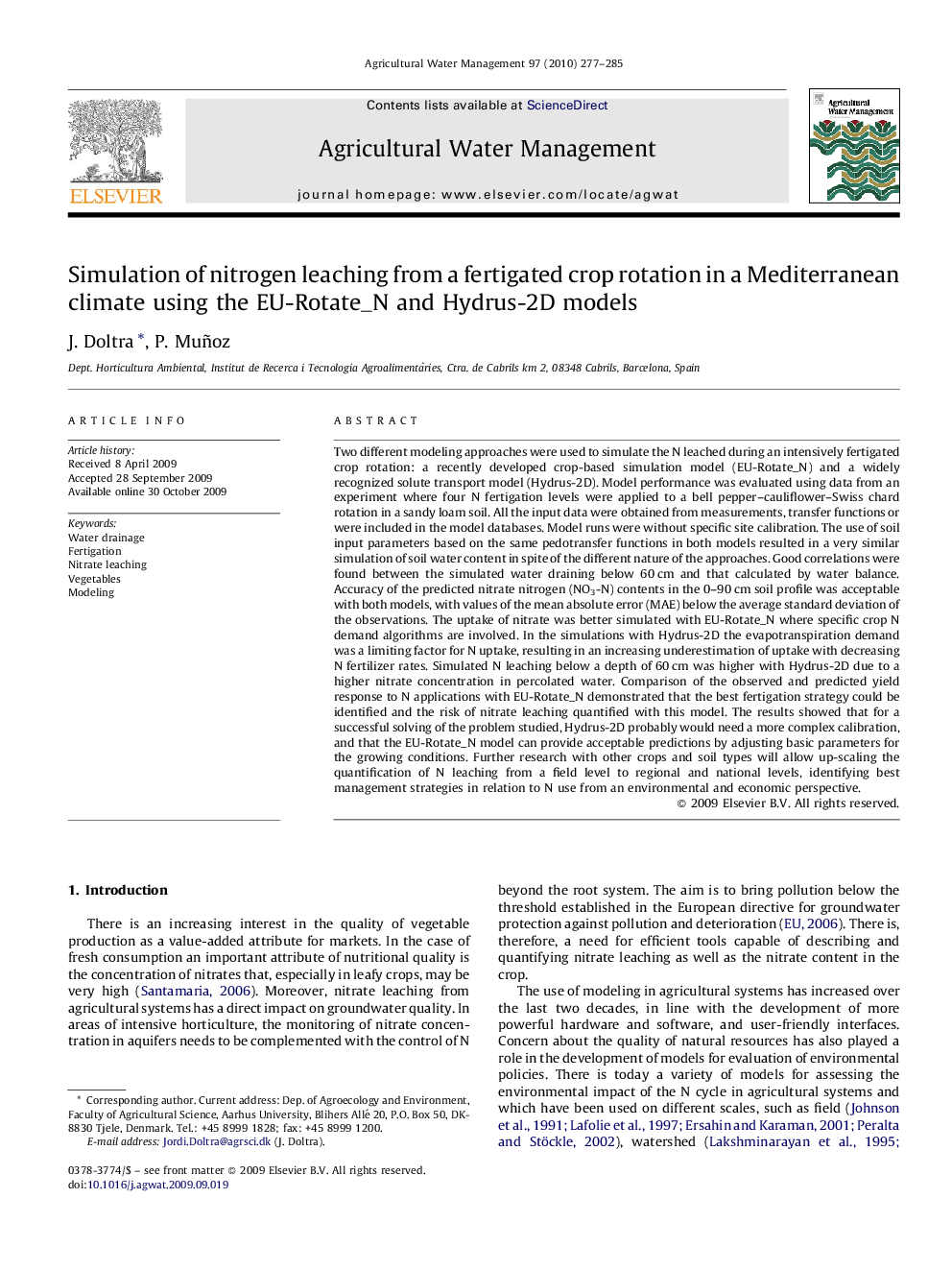| Article ID | Journal | Published Year | Pages | File Type |
|---|---|---|---|---|
| 4480086 | Agricultural Water Management | 2010 | 9 Pages |
Two different modeling approaches were used to simulate the N leached during an intensively fertigated crop rotation: a recently developed crop-based simulation model (EU-Rotate_N) and a widely recognized solute transport model (Hydrus-2D). Model performance was evaluated using data from an experiment where four N fertigation levels were applied to a bell pepper–cauliflower–Swiss chard rotation in a sandy loam soil. All the input data were obtained from measurements, transfer functions or were included in the model databases. Model runs were without specific site calibration. The use of soil input parameters based on the same pedotransfer functions in both models resulted in a very similar simulation of soil water content in spite of the different nature of the approaches. Good correlations were found between the simulated water draining below 60 cm and that calculated by water balance. Accuracy of the predicted nitrate nitrogen (NO3-N) contents in the 0–90 cm soil profile was acceptable with both models, with values of the mean absolute error (MAE) below the average standard deviation of the observations. The uptake of nitrate was better simulated with EU-Rotate_N where specific crop N demand algorithms are involved. In the simulations with Hydrus-2D the evapotranspiration demand was a limiting factor for N uptake, resulting in an increasing underestimation of uptake with decreasing N fertilizer rates. Simulated N leaching below a depth of 60 cm was higher with Hydrus-2D due to a higher nitrate concentration in percolated water. Comparison of the observed and predicted yield response to N applications with EU-Rotate_N demonstrated that the best fertigation strategy could be identified and the risk of nitrate leaching quantified with this model. The results showed that for a successful solving of the problem studied, Hydrus-2D probably would need a more complex calibration, and that the EU-Rotate_N model can provide acceptable predictions by adjusting basic parameters for the growing conditions. Further research with other crops and soil types will allow up-scaling the quantification of N leaching from a field level to regional and national levels, identifying best management strategies in relation to N use from an environmental and economic perspective.
